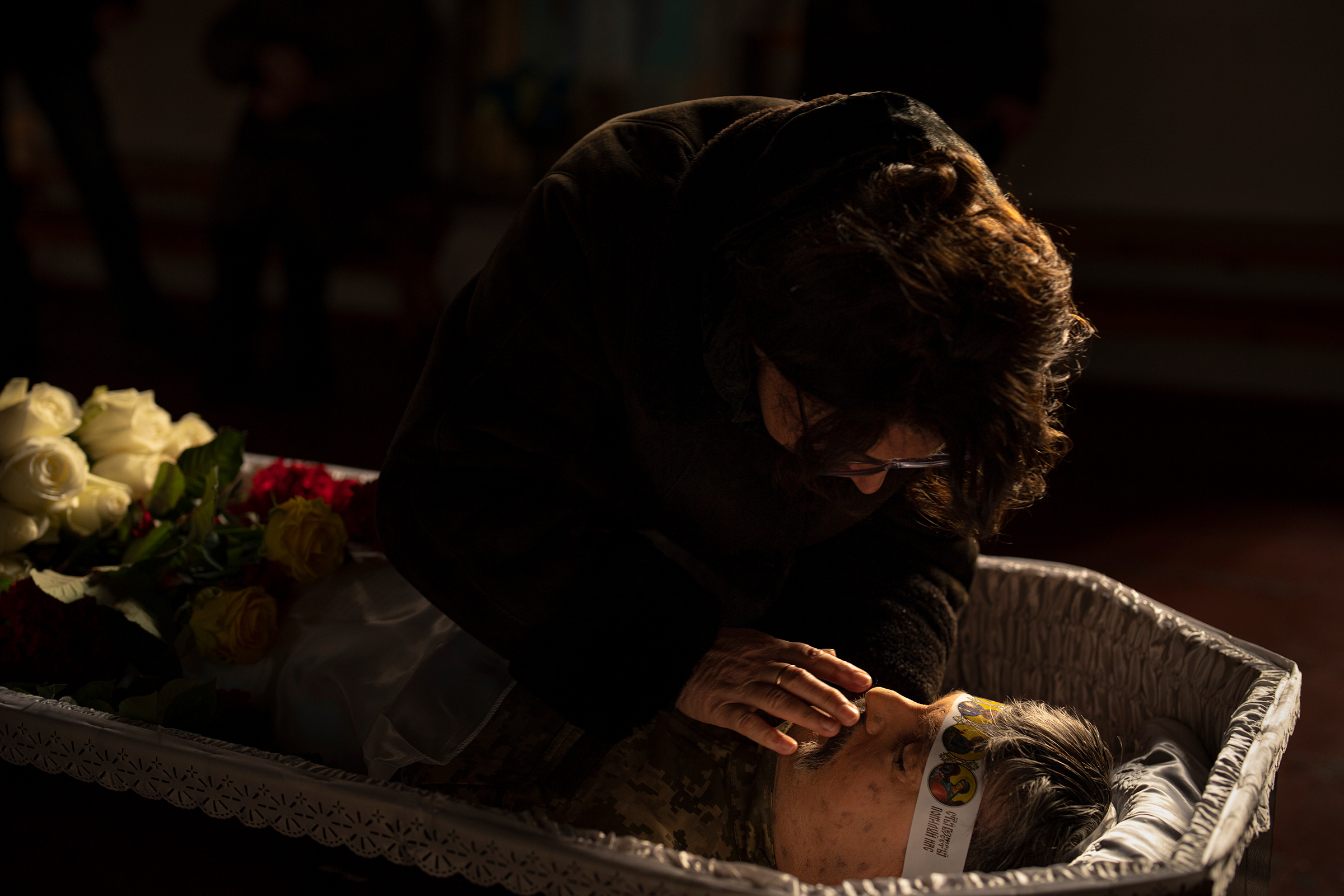
Russia’s dreaded winter offensive seems to have begun, NATO Secretary General Jens Stoltenberg said at a Feb. 13 press conference. According to western and Ukrainian officials, Russia is introducing new troops to the battlefield and redoubling or launching new offenses in eastern Ukraine, including around the towns of Kreminna, Vuhledar, and Bakhmut.
Ukraine Defense Minister Oleksiy Reznikov warned that Russia will accelerate its attacks to mark the Feb. 24 anniversary of the Russian invasion, and has massed hundreds of thousands of troops to prepare for the assault. The Defense Ministry said on Feb. 14 that the Russian offensive has two main goals: capturing Donetsk and Luhansk oblasts.
But even with these new efforts, it’s unclear whether Russia will be able to conquer more of Ukraine within the next few weeks—let alone turn the tide of the war.
What could happen next?

There are two major reasons to suspect that fighting will pick up in the next two weeks, says Kateryna Stepanenko, a Russia analyst at the D.C.-based Institute for the Study of War. First, Russia may be in a hurry to build the attack before the muddy season of spring, which makes it difficult for troops and equipment to pass through the terrain. Second, the upcoming anniversary of the invasion means Russia may want to have a symbolic “victory” to show its people.
Estimates about how many Russian troops are currently in Ukraine vary, although Reznikov said on Feb. 1 that about 500,000 Russian troops have been mobilized for the offensive. At least three major Russian divisions are now on the offensive in Ukraine, says Stepanenko. The U.S. has estimated that 80% of Russian ground troops are involved in Ukraine, while British Defense Secretary Ben Wallace has said that about 97% of the Russian Army is in Ukraine.
However, Russia still seems to be holding back forces, says Philip Wasielewski, a senior fellow in the Foreign Policy Research Institute’s Eurasia program. “They have spare capability. And I don’t think we’ve seen the biggest push yet,” he said.
Can Russia’s offensive succeed?

Russia likely doesn’t have enough time to accomplish its short-term goal of capturing Donetsk and Luhansk, says Stepanenko. Spring is fast approaching, which in Ukraine is known as the “bezdorizhzhia,” or “roadless” season, because the country becomes very muddy. Wet conditions stymied the Russian invasion last year, and Russia may be on the verge of repeating history: there’s too much Ukrainian-controlled territory to conquer before the ground thaws, says Stepanenko. “It’s very unlikely that they will be able to achieve their goal.”
Another problem, says Wasielewski, is that Russian troops aren’t adequately prepared for the attack. “If Russia decides to launch a major offensive, or offensives, with these poorly trained, poorly led and poorly equipped soldiers with limited artillery support …it runs a risk of high casualties, a loss of control, and units retreating or breaking apart.”
Russia’s willingness to treat troops as if they’re disposable is sometimes described as an advantage, as it allows Russian leaders to carry on despite major losses. But the strategy can come at a cost, Stepanenko says, especially if Ukraine were to set up a counterattack in the coming months, leaving a depleted Russian military to defend its positions.
But even small gains could pose a threat to Ukrainian forces, warns Stepanenko. “Any ground Russia captures is still ground they can use for future offensive operations.”
More from TIME
What other obstacles are in Russia’s way?
One year into the conflict, Russia is still dealing with poor leadership, insufficient logistics, and low morale, says Wasielewski. They also face major obstacles, including insufficient modern equipment, such as tanks, ammunition shortages, and an inability to get control over battlefields from the air.
Stepanenko says Russia is still “delusional” about its ability to defeat Ukrainian troops, and the military has pursued offensives despite sustaining major casualties, showing “almost stubborn determination” to win such battles. She points to Russia’s attack on the town of Vuhledar as an example. Forces suffered major losses after getting trapped in a minefield, while mechanized troops advanced in a straight line. “A professional Russian army would know to not move in a column when staging an attack, or would know how to clear minefields,” she says.
Russian military correspondents, including military bloggers analyzing the war from within Russia, have warned that Russia is “rushing” to mount an offensive without fully reconstituting its troops.
“Frankly, I’m not too sure that they will be able to achieve their objectives in years, [let alone] the next two months,” Stepanenko says.
More Must-Reads from TIME
- Cybersecurity Experts Are Sounding the Alarm on DOGE
- Meet the 2025 Women of the Year
- The Harsh Truth About Disability Inclusion
- Why Do More Young Adults Have Cancer?
- Colman Domingo Leads With Radical Love
- How to Get Better at Doing Things Alone
- Michelle Zauner Stares Down the Darkness
Contact us at letters@time.com